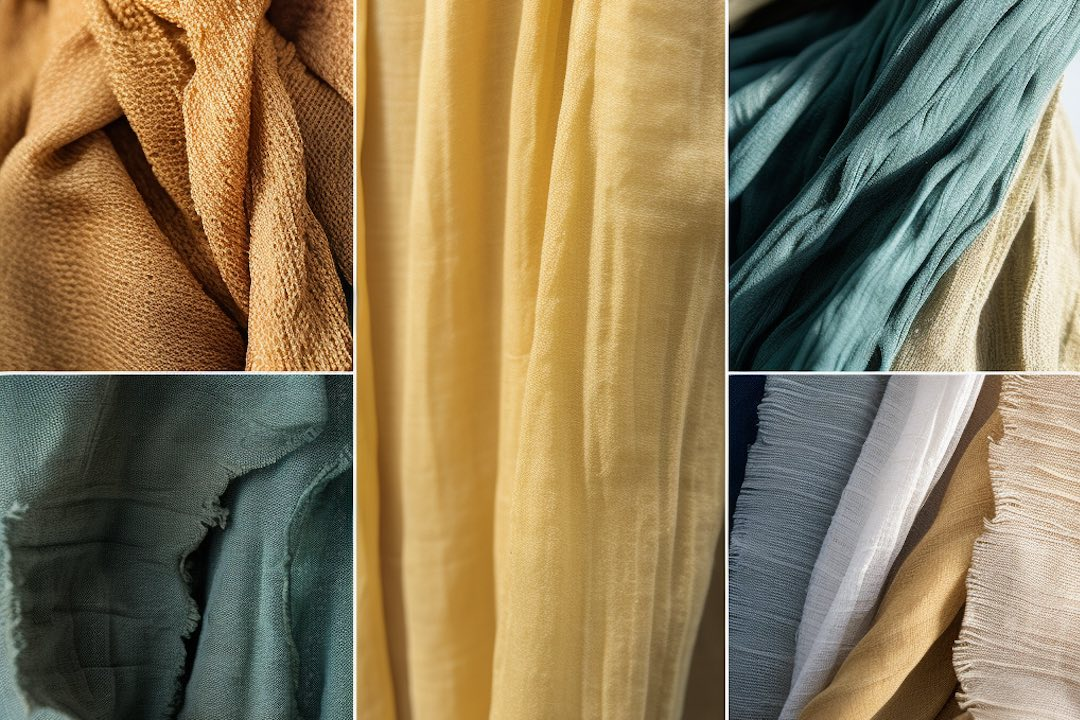Table of Contents
Understanding Textile Dermatitis: A Guide to Prevent Clothing Allergy
This page may contain affiliate links. We may earn a commission on purchases, at no additional cost to you. Learn more →
If you're reading this, you've likely heard about Textile Dermatitis and are understandably wondering, "What exactly is that?" and "Do I need to be concerned?" Rest assured, you're in the right place.
You've probably seen your child scratching their arm or leg after wearing a new piece of clothing. Sure, it might be a minor irritation. Or, it could be the start of something called Textile Dermatitis. Let's break this down together. This issue is more important for parents than you might think!

What is Textile Dermatitis?
Textile Dermatitis, also known as clothing dermatitis, is a type of contact allergy. It's a skin irritation that happens when our skin doesn't agree with the materials or chemical additives in our clothes. It's like when you eat something you're allergic to, but instead of a runny nose or itchy eyes, you get itchy, inflamed skin. And children can be more susceptible due to their sensitive skin.
The Sneaky Causes of Clothing Dermatitis
Ever wondered why your favorite blue jeans don't wrinkle or why your kid's jacket repels dirt like magic? The answer lies in the chemical additives used in the textile industry. To make garments wrinkle-free, dirt repellent, or brightly colored, textile manufacturers often use various chemicals and treatments, many of which can cause allergic contact dermatitis. Not to mention, these synthetic fabrics like polyester or nylon can sometimes be too harsh on our skin, potentially leading to a textile allergy. When these substances and textiles come into contact with sensitive skin, allergic reactions can kick in.
The Role of Synthetic Fabrics and Harmful Chemicals in Causing Dermatitis
Synthetic materials like polyester, rayon, nylon, and spandex don't breathe as well as natural fibers, trapping more sweat and leading to skin irritation. Additionally, chemicals like formaldehyde resins used to keep garments wrinkle-free or dirt-repellent can cause these skin reactions. Even the dye in your blue jeans can cause what's known as nickel dermatitis, a red, itchy skin reaction.
So What Causes Textile Contact Dermatitis?
-
Synthetic fibers
Clothes made from synthetic materials like polyester, rayon, nylon, and spandex can cause skin irritation and fabric allergies. They trap heat and sweat, which can exacerbate the issue.
-
Metallic Components
You might also react to metallic elements in your clothes. For example, the studs on your jeans might contain nickel, causing 'nickel dermatitis'. Nickel is often used in fasteners, zippers, and other clothing hardware, and it's a common allergen. So, if you've noticed a rash around your waistline or where the metal parts of your clothing touch your skin, it might be nickel dermatitis.
-
Toxic Dyes and Chemicals
Formaldehyde resins, used to make clothes wrinkle-resistant, or other chemicals and dyes, like para-phenylenediamine (PPD) and azo dyes, can cause allergic reactions. Despite their potential harm, these chemicals are often found in modern textiles. Clothing that is labeled "wash and wear," "permanent press," "no-iron," or "dirt repellent" is especially likely to have these chemicals that irritate your skin.
But the textile industry's issue is not just about the potential skin irritation it causes. The rampant use of synthetic fibers, harmful chemicals, and dyes also pose serious environmental threats. The production processes often lead to water and soil pollution, while the non-biodegradable nature of synthetic fibers contributes to waste problems.
Spot the Red Flags: What are the symptoms of textile dermatitis?
Typical for textile dermatitis are allergic late reactions. This means that skin redness, itching, or the formation of eczema usually only occur hours or days after skin contact with the allergen.Usually, the affected areas are those with intensive clothing contact. These are often the inner elbows, armpits, and behind the knees, but also the groin and buttocks, and anywhere clothing is tight. Sometimes mere contact with allergenic substances is enough, but often it's the friction that comes with wearing clothes.
Recognizing the Symptoms of Clothing Dermatitis
Now, how to spot textile dermatitis? Identifying Textile Dermatitis involves being vigilant about certain signs and symptoms.
What Does a Clothing Allergy Look Like?
In many cases, symptoms of textile dermatitis can take hours, days, or even weeks to appear. You might experience redness, scaly skin, or itchy areas, often appearing in folds of your skin or other areas that make close contact with your clothes. Allergic reaction to clothing symptoms are:
-
Itching (the most common sign)
-
Redness or inflammation
-
Bumps, blisters, or hives
-
Dry, scaly, or darkened skin
If these symptoms appear where clothes have snug contact with the skin (like waistbands or cuffs), it could well be Textile Dermatitis.
Humid or hot environments can exacerbate these issues, making people working in such conditions, like a bakery, more prone to dermatitis
How do you get rid of textile dermatitis?
Identifying and avoiding the garment that triggers your skin rash often allows the condition to resolve naturally without the need for medication. However, if the rash is causing significant discomfort, your doctor may provide treatments such as antihistamines, hydrating creams, or steroids to alleviate your symptoms as the rash subsides.

Impact of Textile Dermatitis on Children
Health and Well-being Impact
Besides the itchiness and discomfort, Textile Dermatitis can impact a child's overall health. Repeated scratching can lead to skin infections. Sleep might be disrupted due to the itch. Plus, clothing related skin conditions could lead to secondary issues like fever if the skin gets infected.
Psychological Impact
Imagine feeling uncomfortable every time you put on your clothes. It's not just the physical discomfort that matters, but also the psychological impact. Children with chronic skin conditions may feel self-conscious or anxious, affecting their self-esteem and social interactions.
Prevention of Contact Dermatitis
To prevent dermatitis, start by identifying the materials that cause you discomfort. Do you experience skin reactions after wearing polyester-based clothes? It could be a polyester allergy. Consider getting an allergy test for a precise diagnosis.
Remember, a 'contact allergy' isn't just about one fabric or material. It often involves a variety of substances used in dyeing textiles, and these substances can cause allergic contact dermatitis. In humid or hot environments, the likelihood of experiencing a reaction increases.
Now, here's where you can take control.
-
Avoiding polyester and Ditching Synthetic Fibers for Natural & Organic Materials
Opting for clothing made from natural fibers can be a game-changer. Organic textiles, which are made without harmful chemicals, can be gentler on the skin and are less likely to cause irritation. For example, organic cotton is an excellent choice. It is soft, breathable, hypoallergenic, and comfortable. Check out our guide on sustainable materials for more information.
Clothing made from natural fibers tends to use less dye, which can further reduce the chances of skin irritation. While synthetic fibers, like polyester, may be treated with numerous chemicals, organic clothing is often dyed using natural, less-irritating dyes. Still, it's worth mentioning that 'less' does not mean 'none'. Even clothing made from natural fibers can trigger reactions in some people.
-
The Value of Second-Hand Clothes & Organic Detergents
Buying second-hand clothes is another effective method to prevent skin reactions. Second-hand clothing has been washed multiple times, reducing residual chemicals that might be left from the manufacturing process. Here's an interesting article about the benefits of second-hand kids' clothes and how they can benefit kids' health.
What you wash your clothes with can be as important as the clothes themselves. Many detergents contain harsh chemicals that can linger on your clothes and irritate your skin. Switching to organic detergents can be another proactive step in minimizing skin irritation and allergic reactions.
-
A Call to the Textile Industry
One of the broader changes we need to encourage is for textile manufacturers to use fewer chemicals during production. As consumers, we can drive that change by supporting brands that prioritize organic and chemical-free practices. There are many sustainable kids brands that offer GOTS certified clothing, ensuring that their products are free from harmful substances.
Remember, the best way to manage contact dermatitis is to know your triggers and make the necessary changes in your lifestyle. It's all about creating a healthier environment for your skin and for the planet!

The Protective Power of Organic Textiles
Considering all this, it's no wonder that organic textiles are having their moment in the sun. These natural fibers, like cotton, linen, or silk, can let your skin breathe and are less likely to cause irritation. Additionally, they generally don't come with the chemical additives found in traditional clothing.
This isn't to say that organic clothes are a panacea for all skin troubles. But choosing garments made from natural fibers can be a smart move, especially for those with sensitive skin or known allergies. Just remember that "organic" or "natural" doesn't always mean allergen-free, so it's always good to do an allergy test if symptoms persist.
So what's the solution? Enter organic textiles. Organic clothing is made from natural fibers and treated with fewer chemicals, making it a safer option for those with textile dermatitis. This includes clothes made from organic cotton, linen, and hemp. These materials are not only gentler on your skin but also more breathable, helping you sweat less and prevent skin irritation.

image by Carolina Heza on Unsplash
FAQ
-
What is the most common fabric to be allergic to?
Most commonly, people are allergic to synthetic fabrics such as polyester and rayon, or to the chemicals used in the dyeing and processing of clothes. However, allergies can potentially develop to any fabric material.
-
What clothing is hypoallergenic?
Hypoallergenic clothing is typically made of materials like 100% cotton, silk, bamboo, and merino wool. These fabrics are less likely to cause allergic reactions. It's also helpful if the clothing is dyed with natural dyes or left undyed, as synthetic dyes can also trigger allergic reactions.
-
How do you treat clothing dermatitis?
The primary step in treating clothing dermatitis is to identify and avoid the garment causing the irritation. The rash often resolves naturally without medical intervention. However, if the rash is causing significant discomfort, treatments such as antihistamines, moisturizing creams, or steroids may be prescribed by a doctor to alleviate symptoms.
-
Can you be allergic to cotton?
Although it's relatively rare, it is possible to be allergic to cotton. However, most people who have a reaction to cotton clothes are usually reacting to the chemicals used in processing the cotton rather than the cotton itself. If you think you might be allergic to cotton, it's a good idea to consult a dermatologist or allergist.
Disclaimer: Communicate your worries with your medical professional.
This blog is not designed to identify or manage textile contact dermatitis. If there's any possibility that you or your child might be dealing with textile contact dermatitis, make sure to arrange a consultation with your medical professional.












